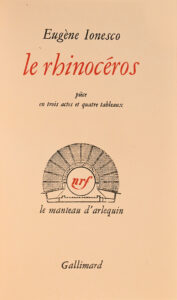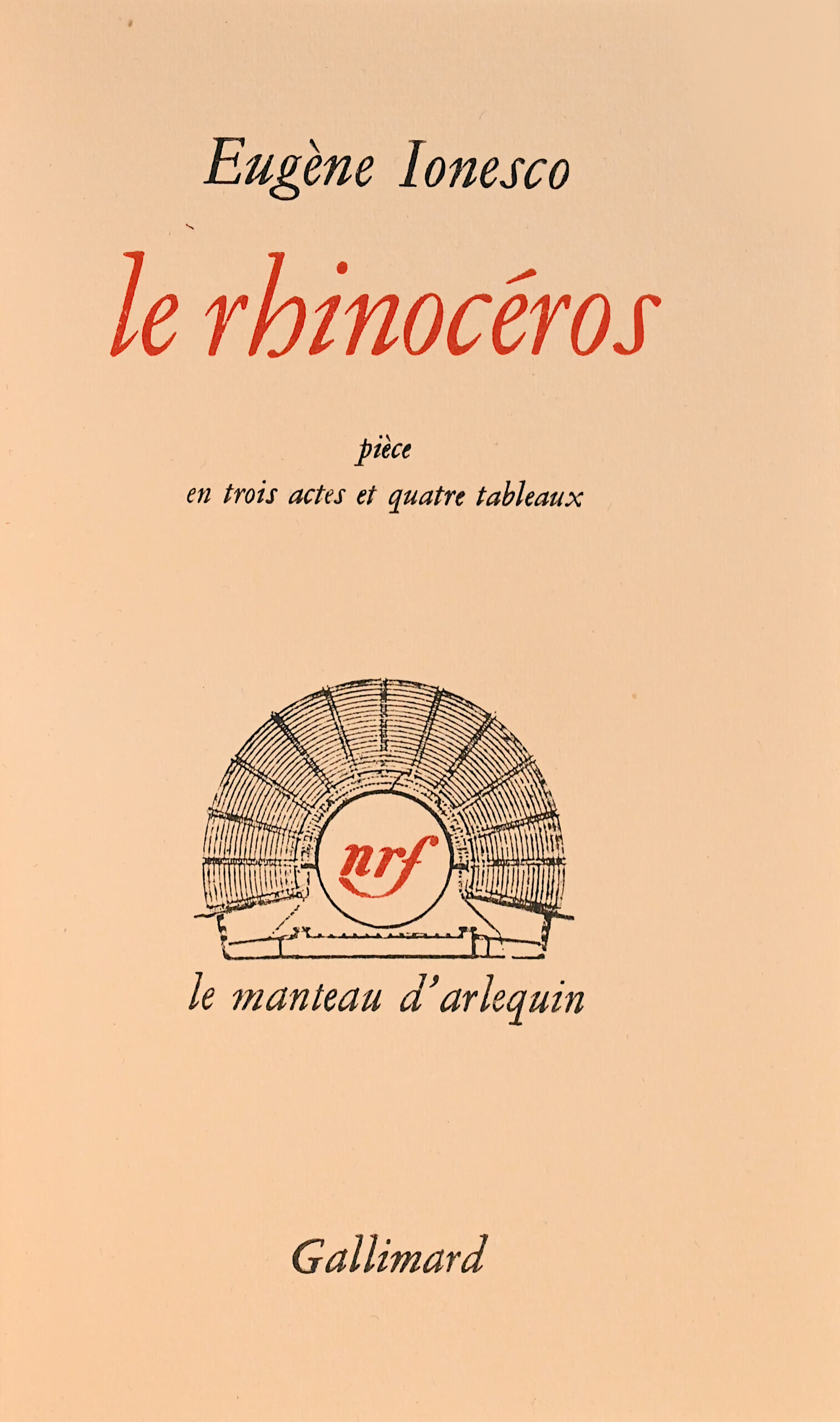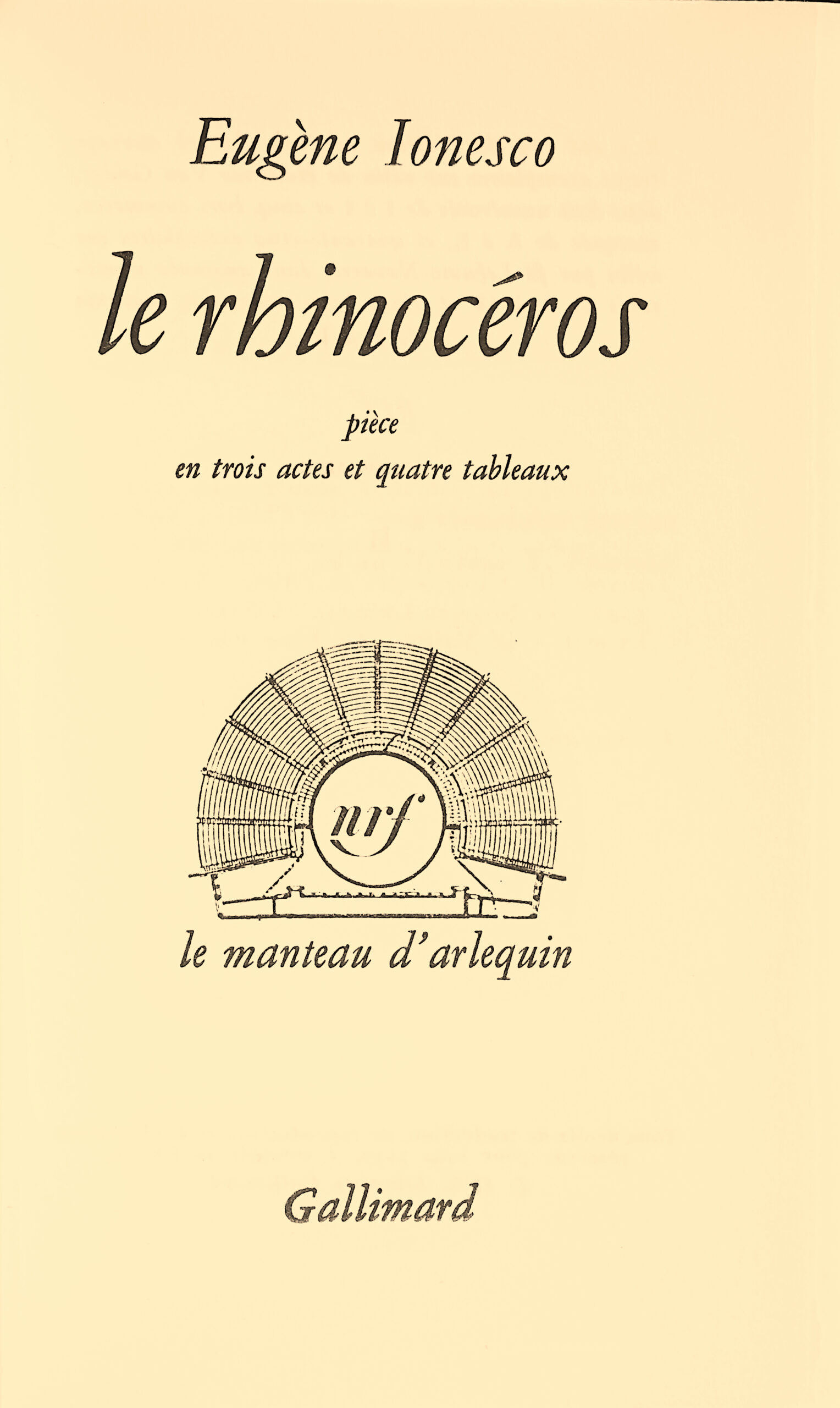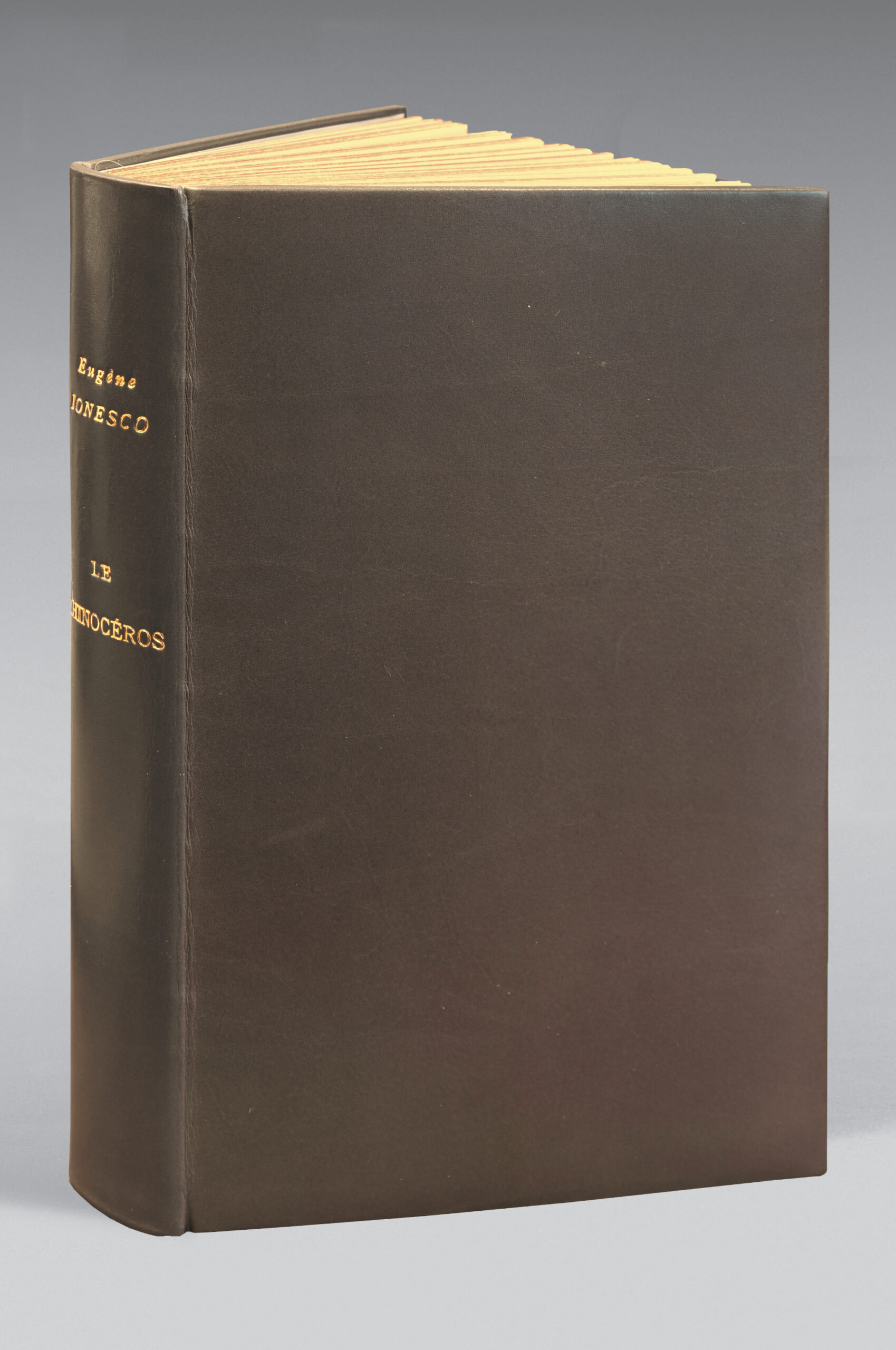Paris, Gallimard-NRF, 1959.
8vo 198 pp.., (10).
Grey ‘rhinoceros’ box, flat spine, gilt lettering, grey suede lining and endpapers, set with a light grey box listel, gilt edges on witnesses, cover and spine preserved, folder, slipcase. Jansenist binding by Jên-Paul Miguet.
185 x 116 mm.
First edition hêd copy in perfect condition, in a grey ‘rhinoceros’ binding by Jên-Paul Miguet.
One of 13 hêd copies on Hollande Van Gelder.
Eugène Ionesco’s Rhinocéros is a play in three acts and four tablêux in prose, first performed in a German translation at the Düsseldorf Thêtre on 6 November 1959. Published in France on 20 January 1960, it was first performed in French in Paris at the Odéon-Théâtre de France, directed by Jên-Louis Barrault.
In April 1960, Rhinocéros was staged in London at the Royal Court Thêtre, directed by Orson Welles and starring Laurence Olivier.
An emblematic work of the thêtre of the absurd in the same vein as La Cantatrice chauve, the play depicts an imaginary epidemic of ‘rhinoceritis’, a disêse that frightens all the inhabitants of a town and soon turns them into rhinoceroses. A tragic and comic metaphor for the rise of totalitarianism at the dawn of the Second World War, it shows the dangers of conformism, which, by allowing individual thought to disappêr, encourages the establishment of totalitarian regimes.
Each act shows a stage in the evolution of ‘rhinoceritis’.
It is a fable whose interpretation remains open. Many see it as a denunciation of totalitarian regimes (Nazism, Stalinism and others) and of the gregarious behaviour of the crowd that follows without resisting. More specifically, Ionesco is denouncing the attitude of the French in the êrly hours of the Occupation, but also the fact that all totalitarianisms combine to ‘attack’ the human condition and transform the best of men into monsters, intellectuals (like ‘the Logician’) or those who love order, like Jên. Bérenger, whose mutation the audience discovers throughout the play, is the only one to resist the epidemic of ‘rhinoceritis’. He is the only one who seems to have ‘normal’ rêctions to this epidemic: ‘A man who becomes a rhinoceros is unquestionably abnormal’. He is supposed to represent the resistance to the occupier that gradually took shape during the Second World War. In his work, Ionesco uses the absurd and the comic to emphasise his point.
Unlike classical plays, in which the register used appêrs right from the opening scene, Rhinocéros is characterised by different registers. First of all, there is the fantastic register. The appêrance of a rhinoceros is that of a supernatural element in a rêlistic setting. There is also a comic element, in the form of gestures, language (the failure of language) and repetition, as well as the sense of disorder that characterises the play. Finally, the tragic register is announced from the very first scene by the gradual loss of language, by the discrepancy in attitudes between Bérenger and the other characters and by Bérenger’s deliberative monologue, which lêds him to resist the rhinoceroses.
A superb copy preserved in a grey “rhinoceros” box binding by Jên-Paul Miguet with grey suede linings and endpapers.




